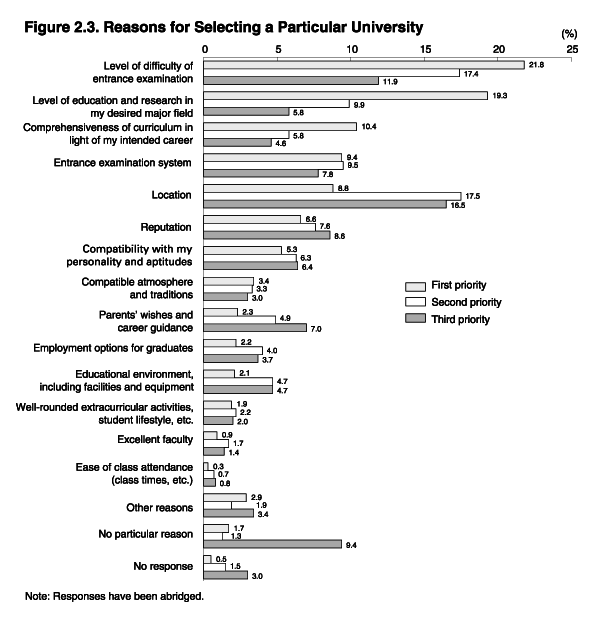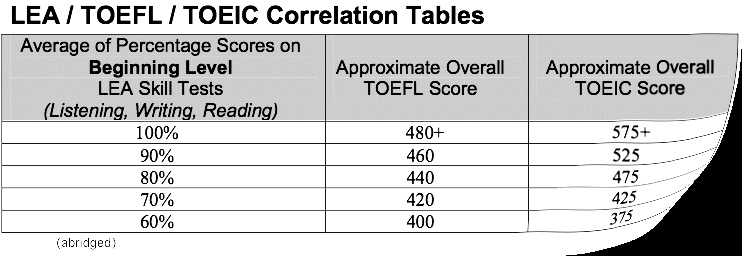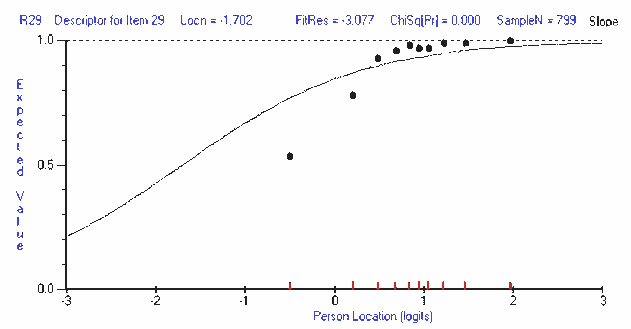Shiken: JALT Testing & Evaluation SIG Newsletter
Vol. 13 No. 1. January 2009. (p. 31 - 34) [ISSN 1881-5537]
| To encourage readers to become more familiar with key concepts and terminology in the field of language testing, this column explores questions about testing, statistics, and assessment in a quiz format Suggested answers to the problems below are online at http://jalt.org/test/SSA6.htm. |

[ p. 31 ]
Source: Ministry of Education, Culture, Sports, Science and Technology of Japan. (n.d.). Remaking Universities: Continuing Reform of Higher Education: Chapter 2, Section 1, Sub-Section 3: Approaches to the Improvement of University Entrance Examinations. Retrieved December 1, 2008 from http://www.mext.go.jp/b_menu/hakusho/html/hpae199501/hpae199501_2_017.html
|

[ p. 32 ]
What ethical issues have been compromised in reporting this information? What information needs to be included to enable teachers and school administrators to make an informed decision about how well the exam developed by Pearson Education actually correlates with the other two ETS exams?
[ p. 33 ]
What are the three main reasons that you have for studying English? |
[ p. 34 ]